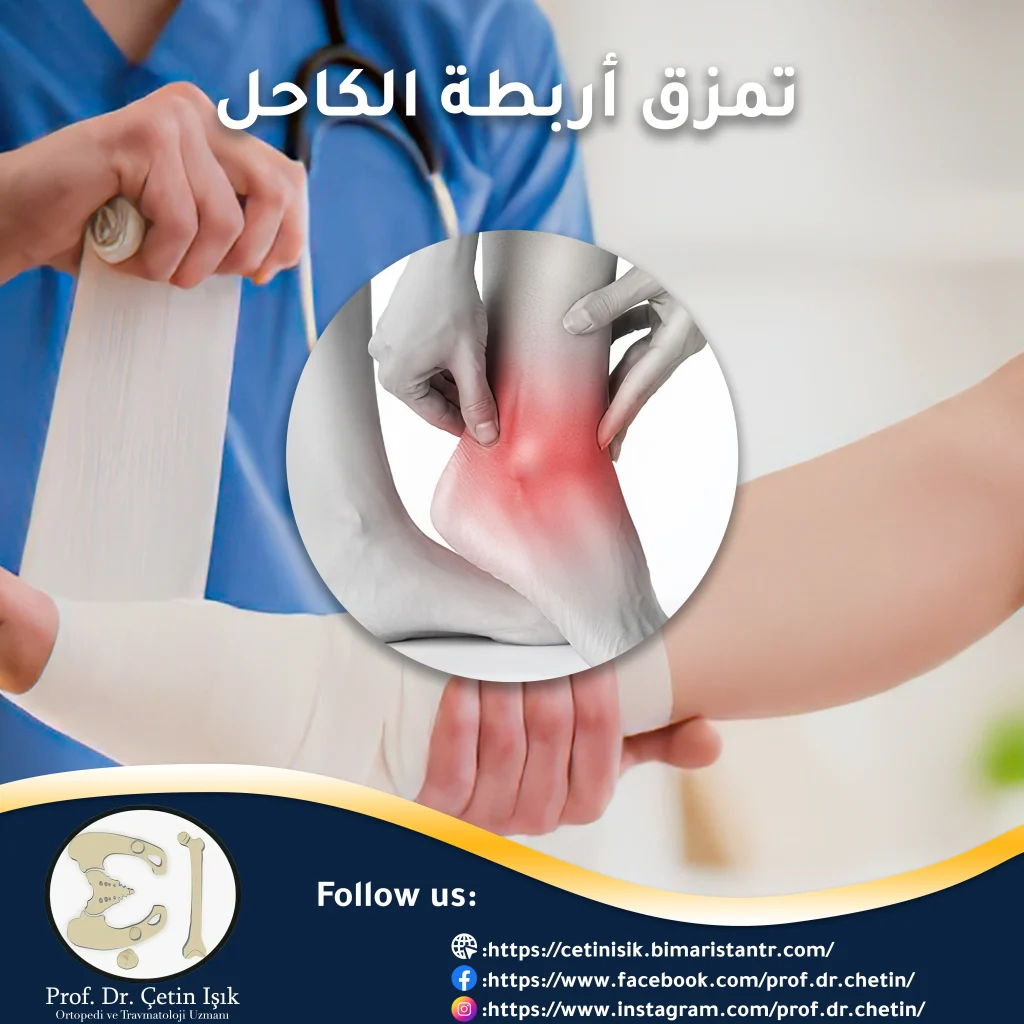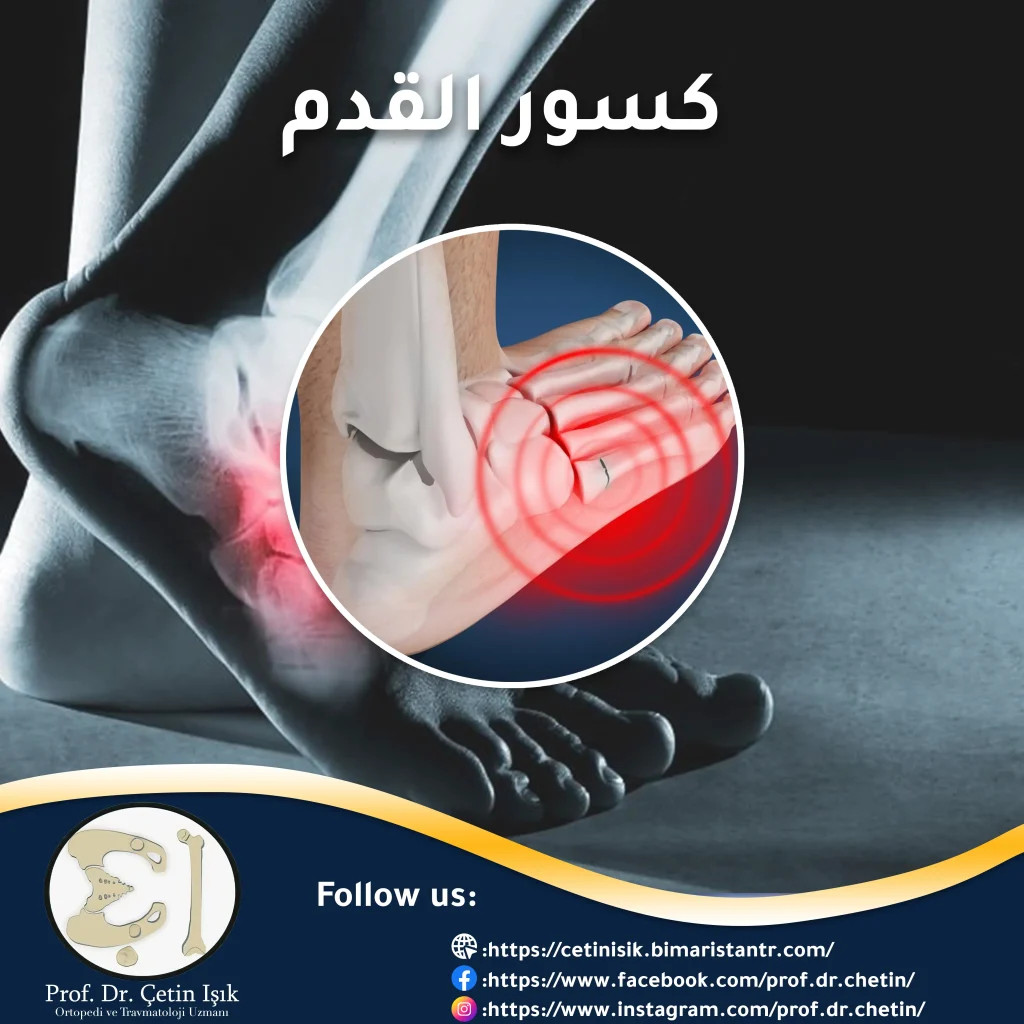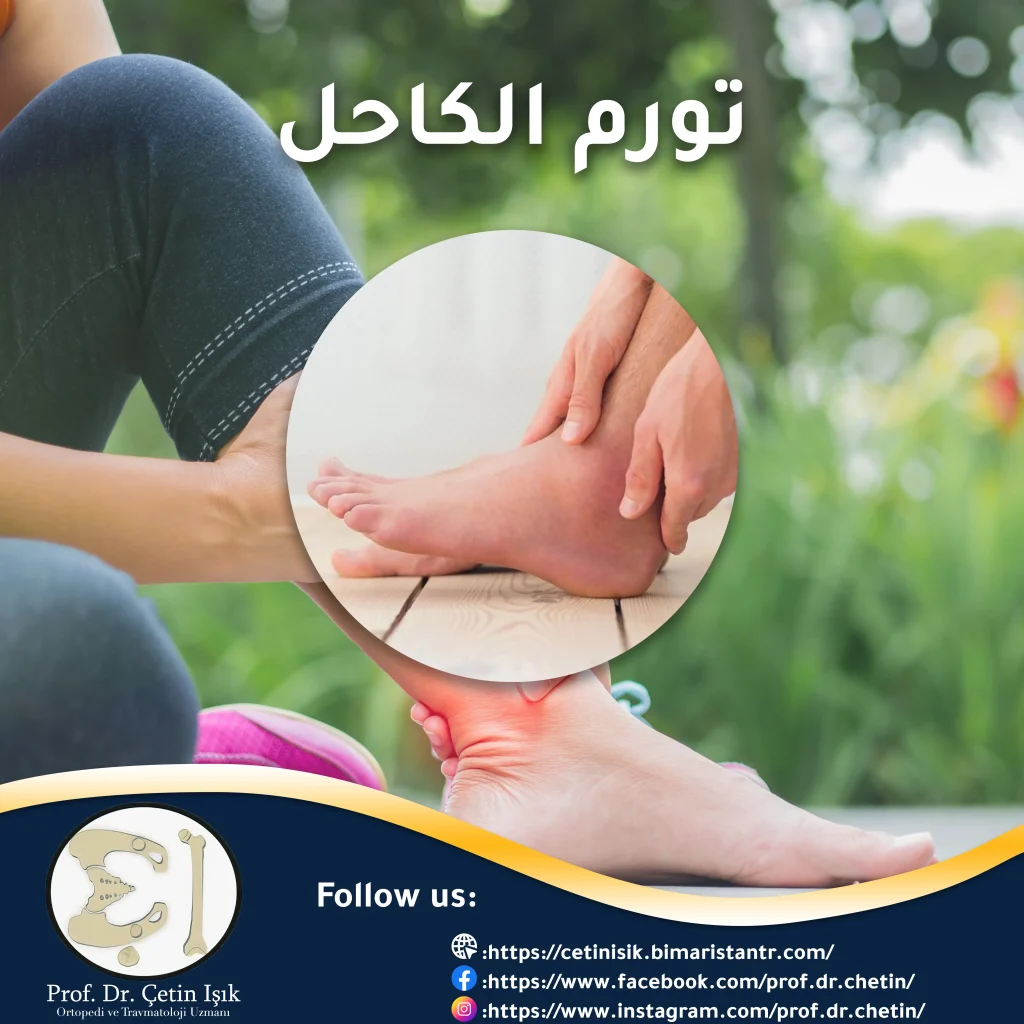Ankle ligament tear is a break in the ligaments that connect the bones in the ankle joint as a result of injuries, the most common of which is an ankle sprain, which leads to ankle instability resulting in difficulty walking.
Ankle ligament rupture is one of the most serious forms of ankle sprain, as its danger lies in the possibility of developing osteoarthritis (osteoarthritis). Let us learn together about torn ankle ligaments, its causes and treatment.
What is a torn ankle ligament?
Ankle ligaments tear is the stretching and cracking of the ligaments that connect the bones that make up the ankle joint together, which leads to pain in the ankle, especially when walking, which limits the patient's ability to walk.
Ankle ligaments are cords of connective tissue that connect the bones of the foot (calcaneus and malleolus) to the bones of the leg (tibia and fibula), stabilizing the ankle joint and preventing it from twisting. Ankle ligaments consist of 3 main groups:
- Medial ligaments: Also called deltoid ligaments, they are 4 ligaments that connect the tibia with the scaphoid, calcaneus, and malleolus bones.
- Lateral ligaments: The lateral (lateral) ligaments include three ligaments: the anterior ankle fibular ligament (ATFL), the posterior ankle fibular ligament (PTFL), and the calcaneofibular ligament (CFL). The lateral ligaments are the most commonly injured ligaments of the ankle.
- Syndesmotic ligaments: It includes 4 ligaments: the anterior inferior tibiofibular ligament (AITFL), the posterior inferior tibiofibular ligament (PITFL), the transverse tibiofibular interosseous ligament (TFIL), and the transverse tibiofibular ligament (TTFL).
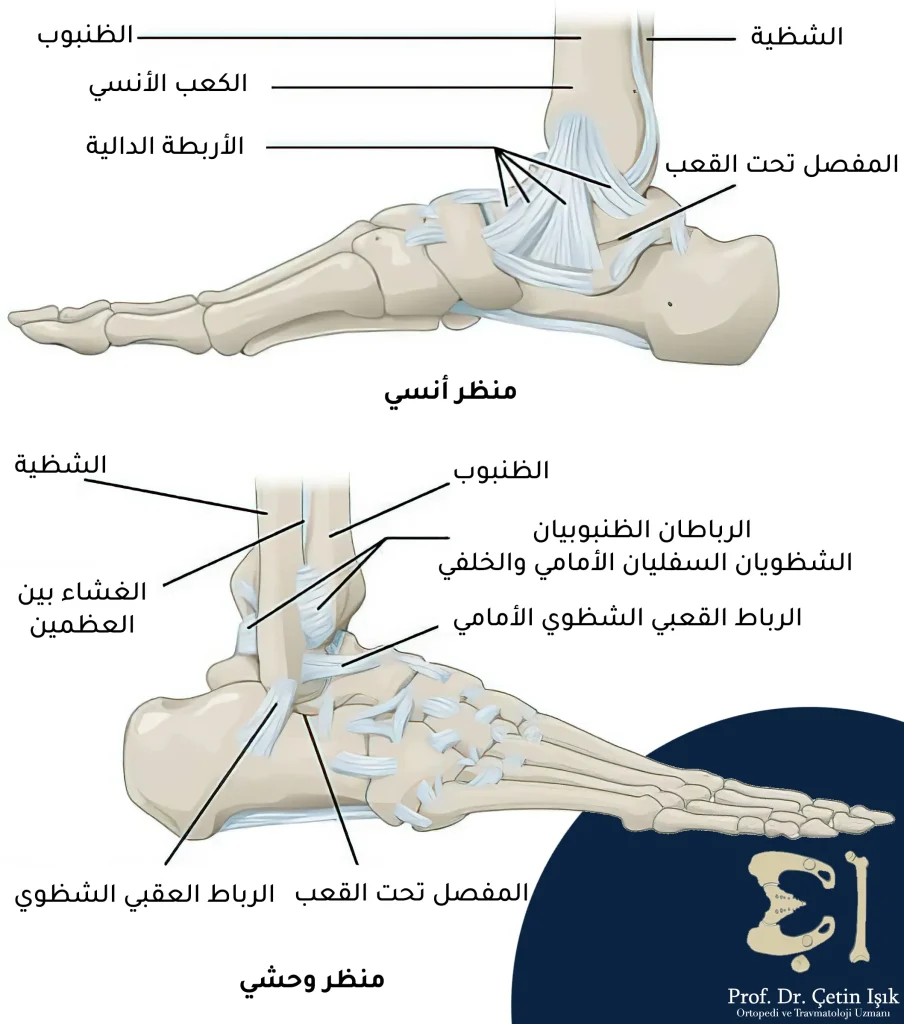
Ankle ligament tears occur due to many reasons, but they are more common when practicing sports activities that require jumping and rotating and in which the ankle is frequently sprained (such as basketball and volleyball).
There are 3 grades of ankle ligament tears:
- A slight stretch or tear occurs in the ligament with mild pain, swelling, and stiffness. The ankle appears stable and it is usually possible to walk with minimal pain.
- A more severe sprain and incomplete tear with moderate pain and swelling, even though the ankle appears stable. However, the affected areas are tender (painful) to the touch and walking is painful
- Complete (total) tear of the affected ligament with severe pain, swelling and bruising. The ankle is unstable and walking is likely not possible because the ankle is unstable with severe pain.
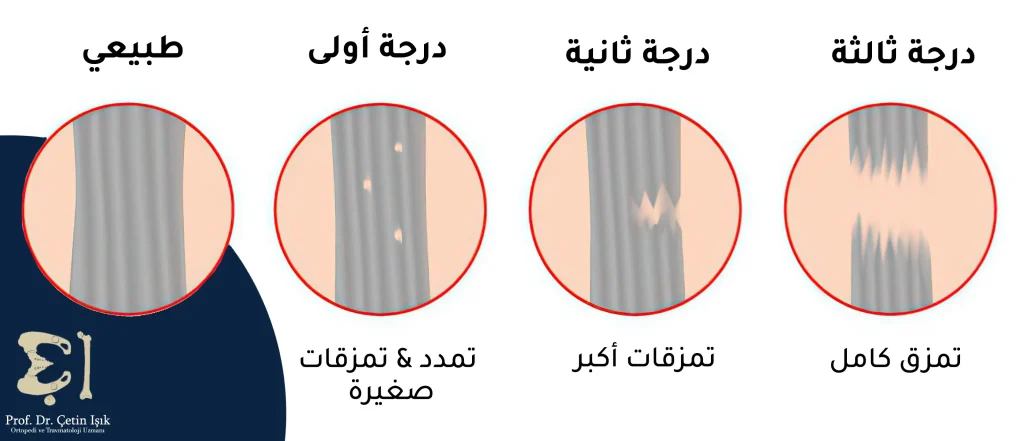
Causes of ankle ligament rupture
A tear occurs when the ankle ligaments are stretched beyond the permissible limit. There are many reasons that lead to a tear in the ankle ligaments, including:
- Incorrect landing of the ankle when jumping or turning
- A fall that causes an ankle sprain
- Roll your ankle when walking or running on an uneven surface
- Ankle injury that occurs during a sporting activity by another person
Symptoms of torn ankle ligaments
Torn ankle ligaments cause many symptoms and signs. Symptoms of torn ligaments in the ankle include the following:
- Ankle pain (severity varies depending on the degree of tear) is usually felt on the outside of the ankle
- Limited ankle range of motion
- Hearing a popping sound when injured
- Ankle joint bruise, which may occur down the leg or in the foot
- Ankle swelling
- Ankle tender to touch (pain to touch)
- Feeling unstable when walking
- Difficulty bearing weight on the ankle
- Weakness in the ankle joint
Diagnosis of torn ankle ligaments
Ankle ligament tear is diagnosed through a comprehensive examination, starting with a clinical examination that includes testing the ankle's range of motion, stability, and ability to bear weight.
Radiography can also be used to evaluate damage to ligaments and other soft tissues, using magnetic resonance imaging (MRI) or ultrasound, and X-RAY may also be necessary to check for a fracture.
Treatment of torn ankle ligaments
Treatment for torn ligaments in the ankle depends on the degree of injury and the impact of pain and difficulty moving the ankle on the patient's lifestyle, in addition to the potential risk of additional ankle injury in the future.
Non-surgical treatment of torn ankle ligaments
Usually, non-surgical methods of treating ankle ligament tears are used to manage cases of mild and moderate ankle ligament tears. Non-surgical treatment is done by following the RICE method, taking medications, in addition to doing exercises to treat ankle ligament tears (physical therapy exercises).
The RICE treatment method includes:
- Rest: Rest helps prevent further damage to the ankle
- Ice: Ice is placed on the ankle for 15-20 minutes every few hours to relieve swelling and pain
- Compression: A compression bandage can be placed on the ankle to reduce swelling and maintain ankle stability
- Elevation: Elevating the ankle helps relieve pain and swelling by draining excess fluid from the site of the injury. To achieve the best results, the ankle must be raised above the level of the heart.
You can also take medications prescribed by your doctor to treat torn ankle ligaments. Medications to treat torn ankle ligaments include non-steroidal anti-inflammatory drugs (NSAIDs) such as ibuprofen and naproxen, which are used to control pain and swelling.
Physical therapy
Physical therapy plays a crucial role in rehabilitation for torn ankle ligaments. Following physical therapy exercises for torn ankle ligaments can reduce pain and swelling and restore range of motion and strength, in addition to improving balance and stability. Physical therapy exercises include:
- Initial management: in the early stages of rehabilitation; Physical therapy focuses on reducing pain and swelling through several methods, including ice, compression, and elevation, in addition to resting and protecting the affected ankle.
- Range of motion exercises: Physical therapists guide patients through gentle range of motion exercises when pain and swelling subside, with the goal of restoring flexibility and movement in the joint.
- Strengthening exercises: It is necessary to strengthen the muscles around the ankle to achieve stability and prevent future injuries. These exercises include the calf muscles, lower leg, and foot muscles.
- Balance and proprioception training (awareness of joint position): Torn ankle ligaments can disrupt the body's sense of balance and proprioception (the patient does not know the position of the joint). Therapists incorporate exercises that test balance and improve proprioception, such as standing on one leg. .
- Functional training: These are exercises that simulate daily activities or movements specific to a sport that the patient usually practices.
- Gradual return to activity: Therapists guide patients through a gradual return to desired activities or sports, ensuring the ankle is fully healed and strong to withstand the demands of the activities.
Surgical treatment of torn ankle ligaments
Surgical treatment of ankle ligament tears is used for injuries that do not respond to non-surgical treatment, in addition to patients who suffer from persistent ankle instability and pain after several months of rehabilitation.
Ankle ligament tear can also be treated surgically in cases of severe tear that is accompanied by other injuries such as ankle cartilage injury or tendon rupture.
Ankle arthroscopy
Arthroscopy is done by using a small camera called an arthroscope to view the structures inside the joint, in addition to inserting small tools through small holes to remove loose parts of bone, cartilage, or parts of ligament that may be stuck in the joint.
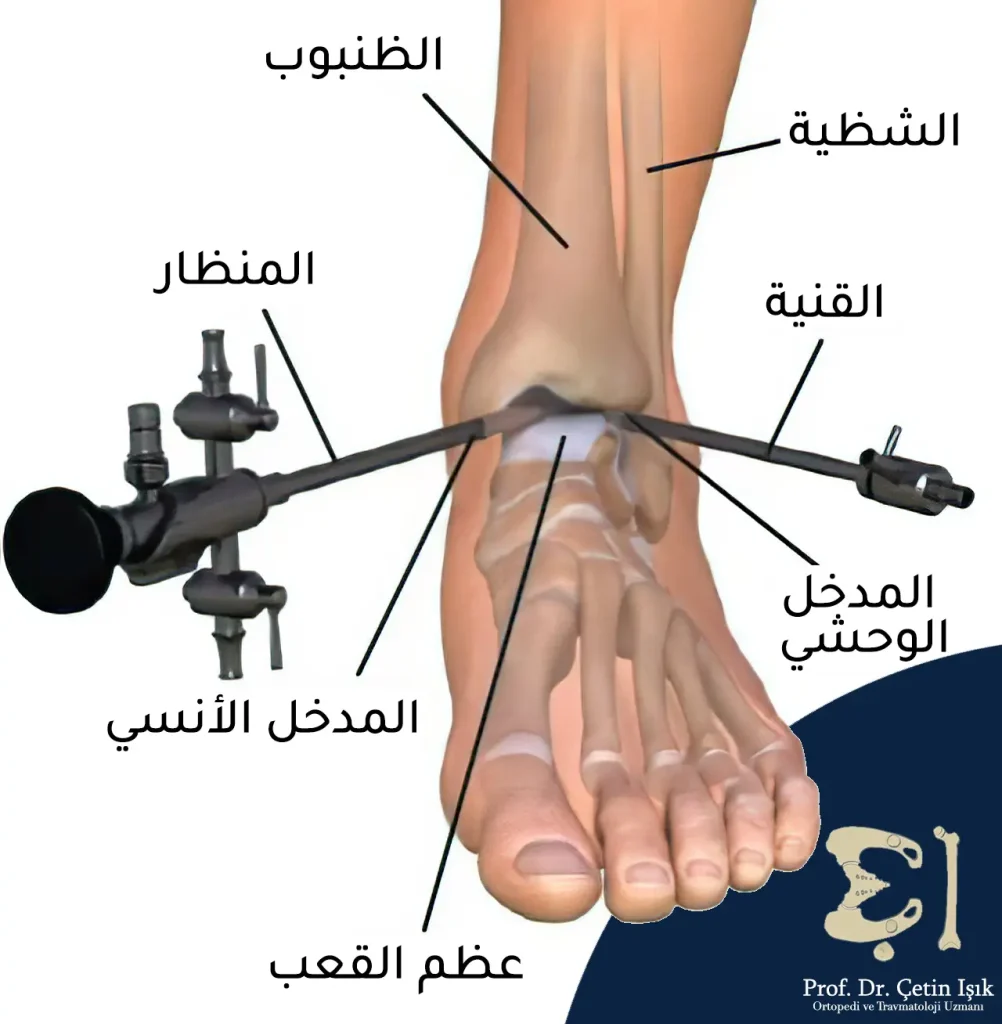
Reconstruction of torn ligament
The torn ligament is repaired with stitches. In some cases, it may be necessary to replace the damaged ligament with a tissue graft obtained from other ligaments or tendons in the foot and around the ankle.
The healing period for torn ankle ligaments varies depending on the degree of injury. Minor injuries (first-degree tear of ankle ligament) take 4-6 weeks to heal, while complete tears (second and third degree) may take two months or more to heal, and in the case of resorting to surgery ; Full recovery may take 3-6 months.
Complications of torn ankle ligaments
There are many complications of torn ankle ligaments that occur when torn ligaments do not heal properly. These complications include the following:
- Chronic ankle joint instability: Chronic joint instability occurs when torn ankle ligaments do not heal adequately or complete rehabilitation does not occur, leading to difficulties in walking or running.
- Repeated ankle sprains: Weak ankle ligaments can make the ankle more susceptible to sprains in the future even when doing simple activities.
- Stiffness of the ankle joint (ankle stiffness): Torn ligaments may heal incorrectly and thus cause tightness that limits joint movement, leading to ankle stiffness.
- Ankle arthritis: Tearing of the ankle ligaments may lead to post-traumatic arthritis, which causes erosion of the cartilage between the joints.
- Chronic pain: Physical activity may cause more damage if the ligaments do not heal properly, causing chronic pain and swelling, so the patient must examine the ankle before returning to his daily activities.
Preventing ankle ligament tears
Maintaining muscle strength and flexibility is one of the best ways to prevent ankle ligament tears. The following procedures can help prevent them:
- Performing strengthening exercises to maintain ankle stability
- Pay close attention when walking or running on uneven surfaces
- Warm up well before practicing any sporting activity
Ankle ligament rupture is one of the important problems that affect the ankle, which leads to difficulty moving and walking, which affects a person’s health and activity. Therefore, the symptoms of ankle ligament rupture and treatment methods must be known in order to detect and manage the injury so that the patient is able to regain his daily activities.
Sources:
Common questions
The duration of treatment for torn ankle ligaments depends on the severity of the injury. First-degree injuries take approximately 4-6 weeks, while second- and third-degree injuries may take two months or more for complete recovery, and complete recovery after surgery may take 3-6 months.
How to treat ankle ligament tears depends on the severity of the tear. Treatment is initially done with the RICE method, followed by physical therapy. However, in severe cases, surgery may be required.
The possibility of walking after a ligament tear depends on the degree of injury and the type of physical therapy exercises that the patient can practice. In the case of a first-degree injury, one can walk after 1-3 weeks. In the second degree, one can walk after 3-6 weeks. In the third degree, one can walk. After several months.
Torn ankle ligaments may result in many serious problems, including post-traumatic arthritis and instability of the ankle joint. Torn ankle ligaments are one of the most serious forms of ankle sprain.
The pain of torn ankle ligaments usually lasts 2-3 days if chronic pain does not occur, which may last months.
A simple ankle ligament tear can heal on its own with rest and continuous care of the ankle, while a third-degree ankle ligament tear may require surgery for treatment.
Voltaren Emulgel can be used to manage pain and swelling caused by torn ankle ligaments.


